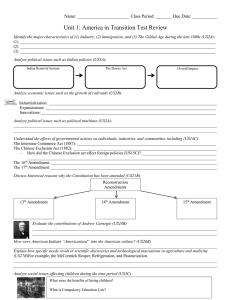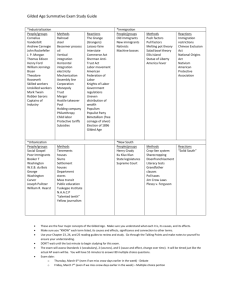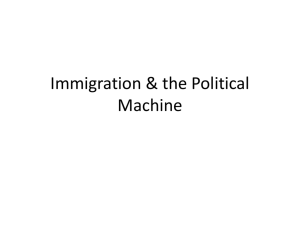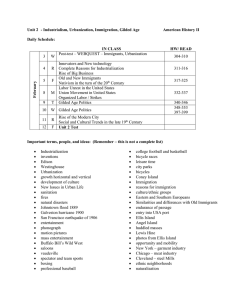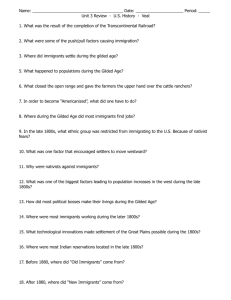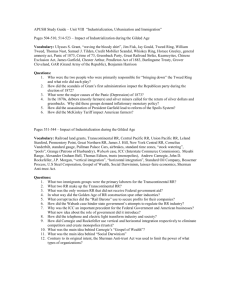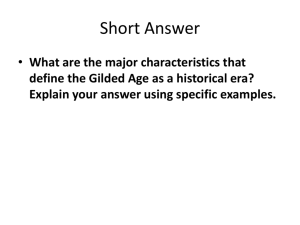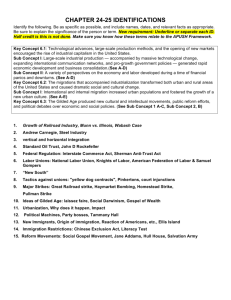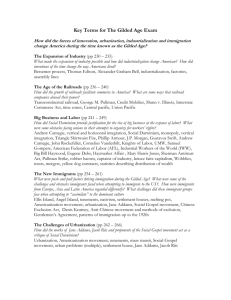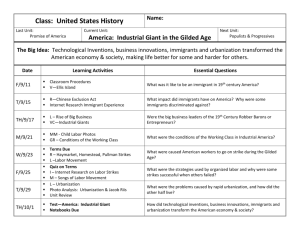Gilded Age Review: Immigration, Urbanization, and Reform
advertisement
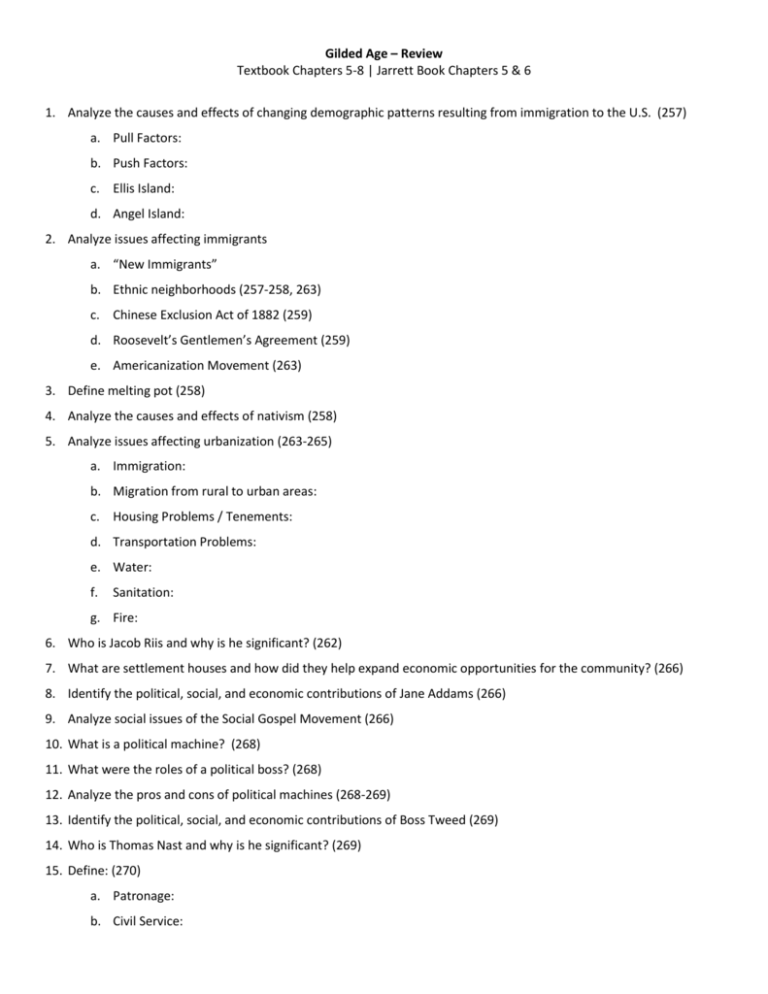
Gilded Age – Review Textbook Chapters 5-8 | Jarrett Book Chapters 5 & 6 1. Analyze the causes and effects of changing demographic patterns resulting from immigration to the U.S. (257) a. Pull Factors: b. Push Factors: c. Ellis Island: d. Angel Island: 2. Analyze issues affecting immigrants a. “New Immigrants” b. Ethnic neighborhoods (257-258, 263) c. Chinese Exclusion Act of 1882 (259) d. Roosevelt’s Gentlemen’s Agreement (259) e. Americanization Movement (263) 3. Define melting pot (258) 4. Analyze the causes and effects of nativism (258) 5. Analyze issues affecting urbanization (263-265) a. Immigration: b. Migration from rural to urban areas: c. Housing Problems / Tenements: d. Transportation Problems: e. Water: f. Sanitation: g. Fire: 6. Who is Jacob Riis and why is he significant? (262) 7. What are settlement houses and how did they help expand economic opportunities for the community? (266) 8. Identify the political, social, and economic contributions of Jane Addams (266) 9. Analyze social issues of the Social Gospel Movement (266) 10. What is a political machine? (268) 11. What were the roles of a political boss? (268) 12. Analyze the pros and cons of political machines (268-269) 13. Identify the political, social, and economic contributions of Boss Tweed (269) 14. Who is Thomas Nast and why is he significant? (269) 15. Define: (270) a. Patronage: b. Civil Service: 16. What are the goals of civil service reform? (270) 17. Describe the pros and cons of the Pendleton Civil Service Act of 1883 (270-271) 18. Analyze how the free enterprise system improve the standard of living in the United States (276-277) a. Skyscrapers: b. Electric Transit: c. Urban & City Planning: 19. Explain how scientific discoveries and technological innovations sparked economic developments (279-281) a. Printing b. Airplanes c. Photography 20. How did education for American children change during this era? (282-284) 21. How die education opportunities for minority groups differ? (284) a. African Americans b. Immigrants 22. Evaluate the impact of W. E. B. DuBois 23. Evaluate the impact of Booker T. Washington 24. Trace the historical development of the civil rights movement a. 13th Amendment (183) b. 14th Amendment (185) c. 15th Amendment (186) 25. Analyze issues affecting minorities (287-289) a. Poll tax b. Grandfather clause c. Segregation d. Jim Crow Laws e. Violence & lynching f. Discrimination in north g. Mexican workers debt peonage h. Chinese 26. Analyze the effects of the landmark U.S. Supreme Court decision Plessy v. Ferguson (287, 290) 27. Evaluate the impact of Ida B. Wells (286) 28. Identify the impact of popular American culture (292-297) a. Amusement Parks b. Sports c. Newspapers d. Fine Arts e. Popular Fiction f. Mark Twain g. Department Store & Chain Store h. Advertising i. Catalogs and RFD 29. What are the major characteristics that define the Gilded Age as a historical era? Explain your answer using specific examples. 30. Describe how immigration, urbanization, and industrialization are all related, and how they each impacted American cities during the Gilded Age.
